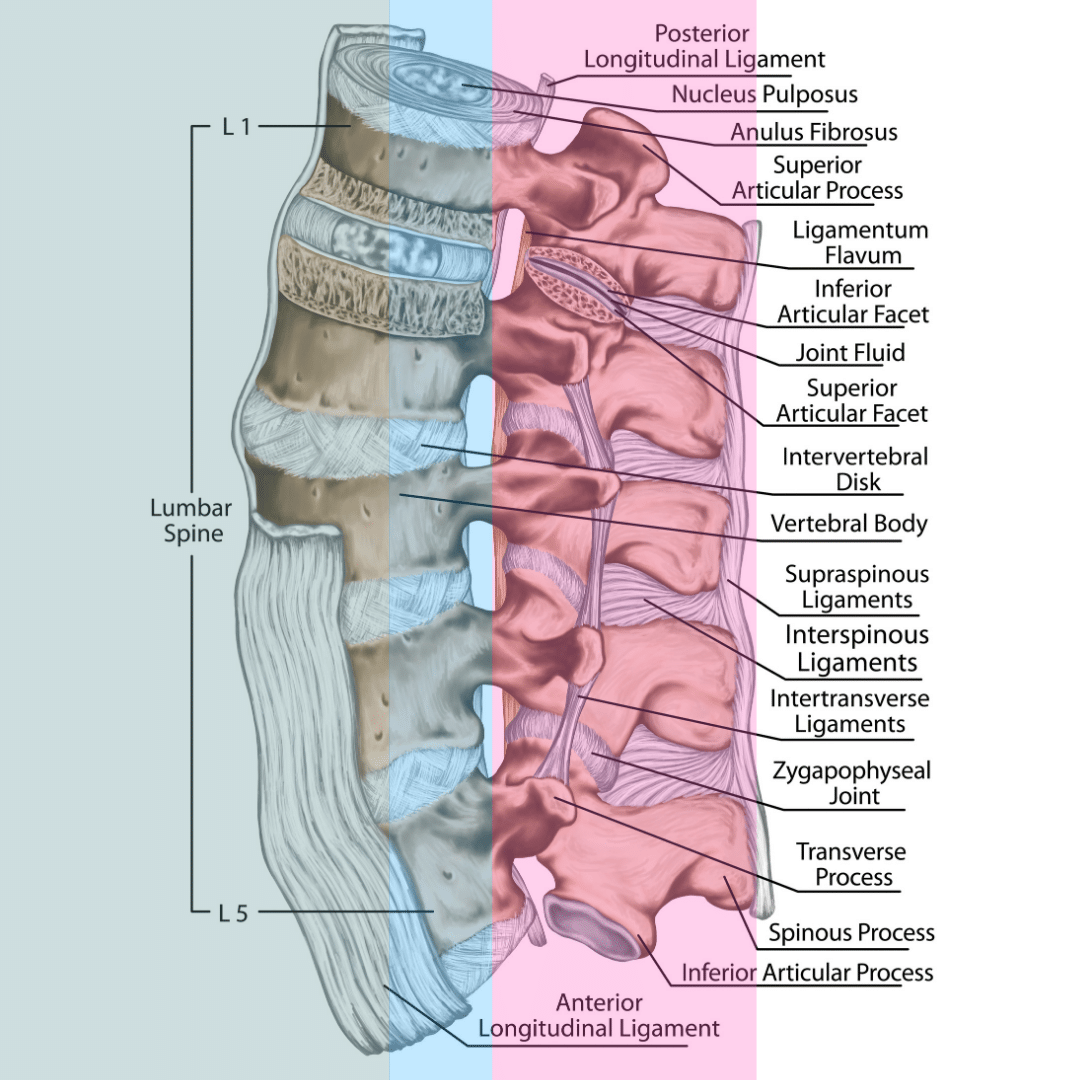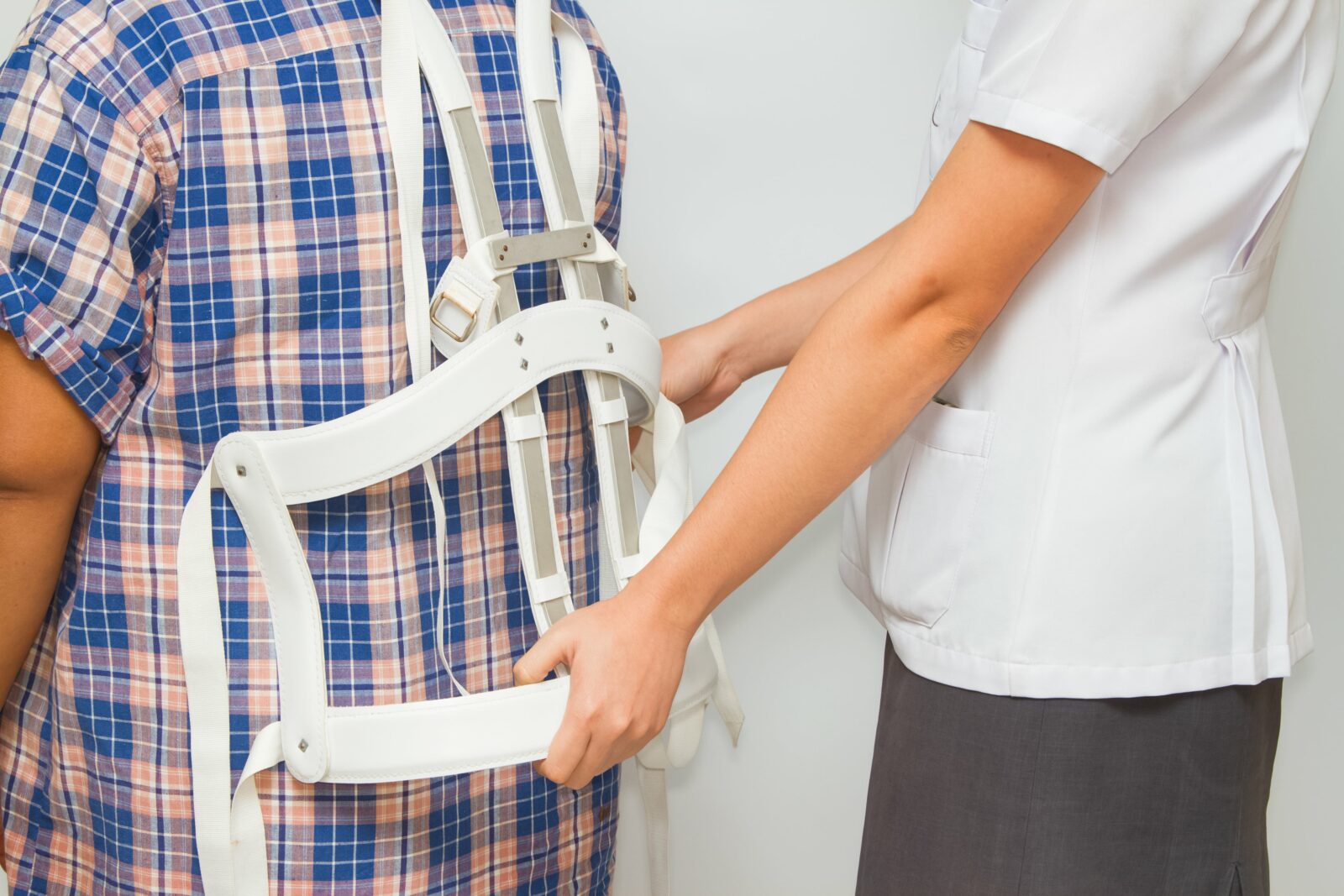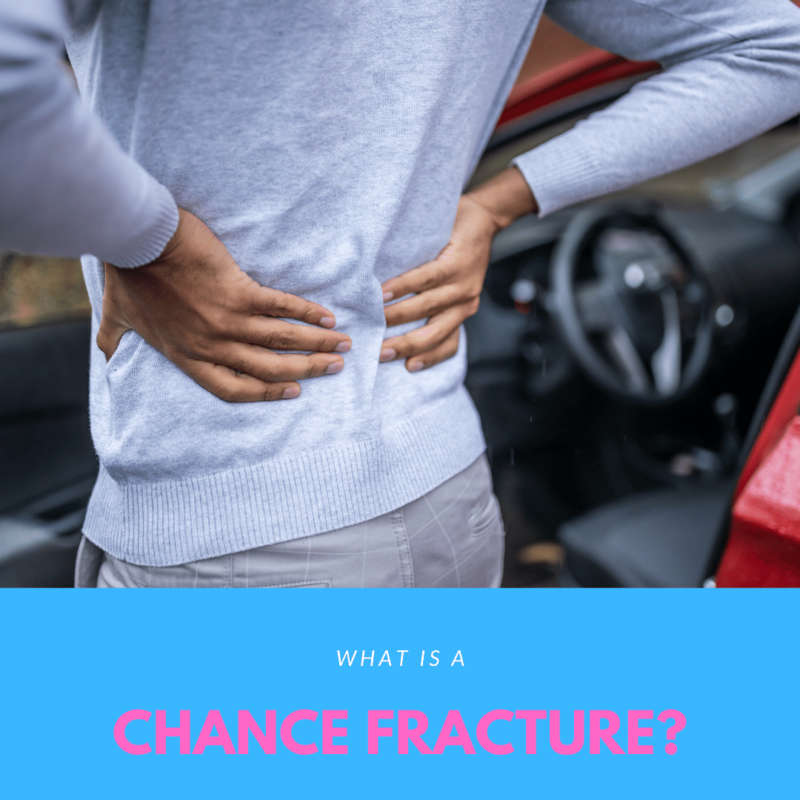Have you ever heard of a Chance fracture? While you may think that any type of fracture occurs by chance, a Chance fracture is actually a specific type of injury. Named after G.Q. Chance, a Chance fracture is a spinal injury that occurs when the spine flexes, then extends with too much force. Chance fractures are also sometimes known as seat belt fractures since they were commonly caused by lap belts during car accidents. Although the number of Chance fractures has decreased with the introduction of shoulder belts, they can still happen.
In most cases, Chance fractures tend to affect the area where the thoracic region of the spine meets the lumbar region. This area is known as the thoracolumbar junction and it is made up of the 12th thoracic vertebrae and the two first vertebrae in the lumbar region. It can be divided into three main columns:

- Anterior column: shown in green, the anterior column is the front most part of the spine that contains the front part of the vertebrae, its disc, and the anterior longitudinal ligament.
- Middle column: shown in blue, the middle column contains the back half of the vertebrae, its disc, and the posterior longitudinal ligament.
- Posterior column: shown in pink, the posterior column contains the pedicles, facet joints, lamina, spinous and transverse processes, and spinal ligaments.
A Chance fracture is thus characterized by a fracture that extends through all three columns, damaging all the structures within these columns. However, the ligaments remain intact even though the spine is fractured, making the entire spine unstable.
When a Chance fracture occurs, the most prevalent symptom is severe back pain that increases with every movement. While it is not a symptom of a Chance fracture, it is important to note that many Chance fractures are accompanied by abdominal injuries since they are generally caused from a lap belt. Luckily, however most Chance fractures do not cause neurologic symptoms.

Chance fractures can be diagnosed by performing a physical exam of the spine and abdomen. Diagnostic imaging methods are also commonly used to determine the extent of the injury and the best treatment option. When visiting your doctor about back pain, an x-ray will be performed to determine if a fracture is present. If you were just in an accident and are in the emergency room, then you will generally be taken to have a CT and/or MRI to determine the extent of the damage.
Treatment for Chance fractures will depend on the extent of the injury. Cases that only affect the spinal bones and not the spinal cord can usually be treated non-surgically by casting the area so that it is immobilized. In cases where the spinal cord or posterior ligaments have been damaged, however, surgery is generally recommended to repair the damage, as well as to attach rods and screws for spinal stabilization.
While recovering from a Chance fracture, it is important to follow any directions provided by your spine surgeon. Generally speaking, Chance fractures treated both surgically and non-surgically are also treated using physical therapy to aid in healing. Although spinal fractures can take a long time to heal, it is definitely worth being patient and allowing them to heal.










